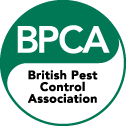Wasps

Wasp Image – Source: Adobe Stock
Signs of wasps
Wasps are flying insects that can be found in many parts of the world. They come in various species, and their appearances and behaviours may vary, but there are some common signs and characteristics that can help you identify their presence:
- Visual Identification:
- Distinctive Appearance: Wasps typically have a slender body with a narrow waist and two pairs of wings. They are often more brightly coloured than bees, with yellow and black stripes or black and white markings. Some species may be brown or reddish.
- Smooth Body: Unlike bees, wasps have smooth bodies without the fine hairs that cover bees.
- Nests:
- Paper Nests: Many wasp species build paper-like nests from chewed wood fibres and saliva. These nests can vary in size and shape but are often papery and greyish in colour.
- Ground Nests: Some wasps, such as yellow jackets, build underground nests. These nests may have a small entrance hole in the ground.
- Hanging Nests: Certain species, like hornets, create large hanging nests that can be found in trees, bushes, or even on the sides of buildings.
- Flight Patterns:
- Erratic Flight: Wasps tend to have a more erratic flight pattern compared to bees. They fly rapidly and can change direction suddenly.
- Aggressive Behaviour:
- Defensive Reactions: Wasps can be more aggressive and territorial than bees. They may become defensive and sting if they feel their nest or themselves are threatened.
- Stinging: Wasps are capable of stinging multiple times. Their stings can be painful and can cause allergic reactions in some individuals.
- Foraging Behaviour:
- Predatory: Wasps are predators and feed on other insects, including caterpillars, flies, and spiders. They may also scavenge for sugary substances like nectar, fruit, or your picnic snacks.
- Noise: When wasps are in flight, they often produce a buzzing or humming sound, which can help you identify their presence.
- Seasonal Presence: Wasps are most active during the warm months, from late spring to early autumn. Their activity tends to peak in the summer.
- Location: The presence of wasps may vary depending on the species and location. Some are more likely to be found in gardens, while others may nest in attics, eaves, or other sheltered areas around buildings.
If you suspect a wasp infestation or nest near your home or if you encounter aggressive wasp behaviour, it’s essential to exercise caution. Some people are allergic to wasp stings and can have severe reactions, so it’s best to contact a pest control professional to safely remove nests and manage wasp problems. Do not attempt to remove nests on your own if you are not experienced in doing so.
How we deal with wasps
It is very natural to feel anxious or uncomfortable when you think pests are in your property. Be confident that S&S Pest Control can help you professionally eliminate these pests


